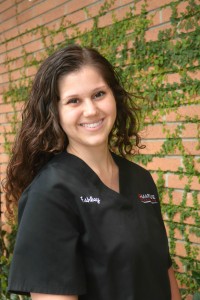
Osgood Schlatter Disease by Ashley Terry
 What is Osgood Schlatter disease? This disease is inflammation of the area just below the knee, where the tendon from the kneecap, or patellar tendon, attaches to the shinbone (tibia). Osgood Schlatter occurs most commonly in growing adolescents, when growth spurts are more likely to occur, causing bones, muscles, tendons, and other bodily structures to change rapidly. Sports, especially running and jumping sports, can cause more stress on the growing body, and can cause Osgood Schlatter to become a more likely problem.
What is Osgood Schlatter disease? This disease is inflammation of the area just below the knee, where the tendon from the kneecap, or patellar tendon, attaches to the shinbone (tibia). Osgood Schlatter occurs most commonly in growing adolescents, when growth spurts are more likely to occur, causing bones, muscles, tendons, and other bodily structures to change rapidly. Sports, especially running and jumping sports, can cause more stress on the growing body, and can cause Osgood Schlatter to become a more likely problem.
The bones of children and adolescents contain a special area where the bone is growing called the growth plate—an area of cartilage located near the end of the bone. When a child is fully grown, the growth plate disappears, and turns into fully formed bone. However, some growth plates serve as an attachment site for tendons; this is the case for front thigh muscles or the quadriceps. When a child is active in sports and other activities, the quadriceps pull on the patellar tendon, which can cause inflammation of the growth plate. This inflammation is what causes the prominent bump of Osgood Schlatter disease.
 Symptoms include knee pain and tenderness, swelling, and tight muscles in the front or back of the thigh. Symptoms may be made worse by physical activity, especially running, jumping, and other sports-related activities. Sometimes, both knees can have symptoms, although one knee may be worse than other.
Symptoms include knee pain and tenderness, swelling, and tight muscles in the front or back of the thigh. Symptoms may be made worse by physical activity, especially running, jumping, and other sports-related activities. Sometimes, both knees can have symptoms, although one knee may be worse than other.
Treatment includes a doctor’s visit with a thorough examination of the knee and joints. The doctor may also order an X-ray to rule out any other possibilities. After the visit, the doctor will usually require the child to limit physical activity until he can play without discomfort or pain. The physician may recommend an over-the-counter pain medication like ibuprofen. Stretching exercises for the front and back of the thigh to relieve pain is also an effective treatment option.
To prevent Osgood Schlatters disease, it’s necessary to reduce the chronic stress placed on the tendon and attachment. Here are some methods for prevention:
- Warming-up and stretching before activity increases the flexibility of the tendon.
- Be aware of particular activities that could cause injury. Know the difference between typical muscle pain (pain is gone in less than 24 hours) vs. injury pain (which doesn’t disappear in 1-2 days). If the latter occurs, discontinue or limit that activity.
- Stretching and strengthening the quadriceps will increase flexibility and alleviate some of the stress.
Source: http://orthoinfo.aaos.org/topic.cfm?topic=a00411
http://stretchcoach.com/articles/osgood-schlatters/
The information provided is for general interest only and should not be misconstrued as a diagnosis, prognosis or treatment recommendation. This information does not in any way constitute the practice of medicine, or any other health care profession. Readers are directed to consult their health care provider regarding their specific health situation. Marque Medical is not liable for any action taken by a reader based upon this information.
